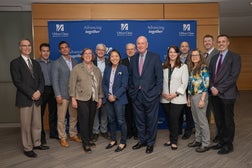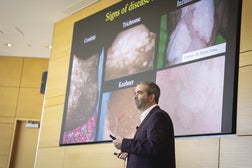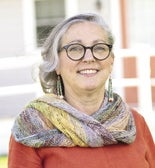UMass Med School Central In Human Genome Mapping
For the past nine years, researchers from the University of Massachusetts Medical School and other institutions around the world have been collaborating to get a better picture of how the human genome works.
Today, the National Institutes of Health (NIH), which is funding the project – known as the Encyclopedia of DNA Elements (ENCODE) – announced that researchers have linked more than 80 percent of the human genome sequence to a specific biological function and mapped more than 4 million regulatory regions where proteins interact with DNA. The findings will be published in 30 papers across several genetics journals.
The work builds upon the Human Genome Project, which was completed 12 years ago and produced a clearer picture of the 3 billion chemical letters in DNA, but little about the way the genetic code actually works.
UMass Front And Center
UMass said its researchers will take a more central role in the next phase of ENCODE.
Job Dekker, a biochemistry and molecular pharmacology professor, has developed three-dimensional models of folded chromosomes that can help determine which parts of the genome come into contact with each other.
"The genome is like a panel of light switches in a room full of lights," Dekker said in a statement. "Except there are thousands of lights and almost a million switches. We don't know what switches turn on which lights. And some switches turn on the same lights or turn on multiple lights."
It is those switches, not the genes, that affect genetic variation between humans and could misfire and cause disease, he added.
In the next phase of ENCODE, Dekker will continue building 3-D models for the entire genome.
Meanwhile, Zhiping Weng, director of the program in bioinformatics and integrative biology at the medical school, has sought to better understand the proteins, called "transcription factors," that control those switches.
Through an analysis of all 457 sets of transcription factors generated by the consortium, she found that those proteins can combine to co-regulate a gene, or will piggyback onto each other to exert another layer of control. Weng and her team built a computer algorithm that can predict the expression of a gene from the state of its regulatory switch.
Weng has received an $8-million NIH grant to perform an analysis on the data collected by the ENCODE consortium.
Read more













0 Comments